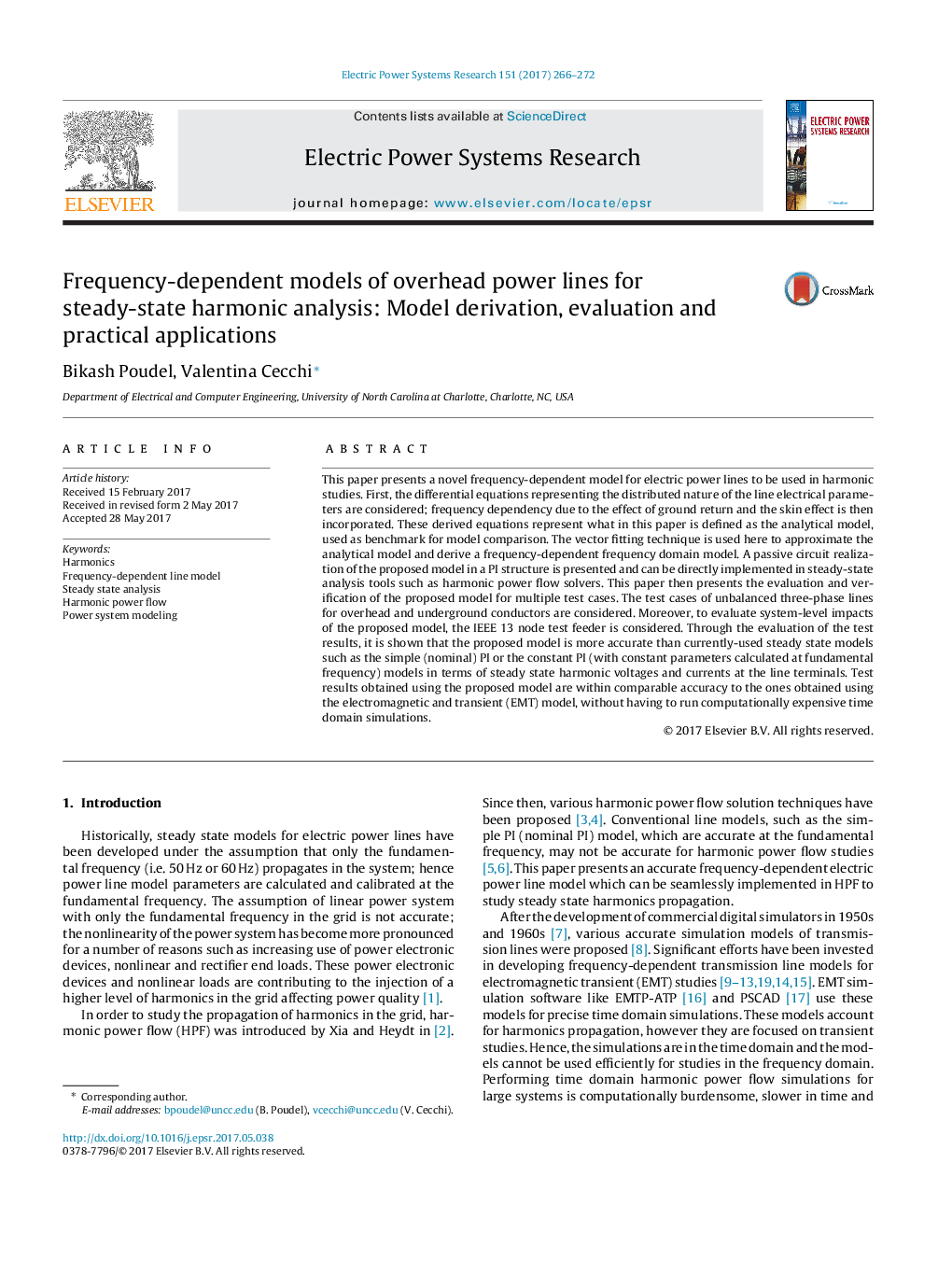| کد مقاله | کد نشریه | سال انتشار | مقاله انگلیسی | نسخه تمام متن |
|---|---|---|---|---|
| 5001020 | 1460862 | 2017 | 7 صفحه PDF | دانلود رایگان |
عنوان انگلیسی مقاله ISI
Frequency-dependent models of overhead power lines for steady-state harmonic analysis: Model derivation, evaluation and practical applications
ترجمه فارسی عنوان
مدل های وابسته به فرکانس خطوط برق سربار برای تحلیل هارمونیک حالت پایدار: مدل سازی، ارزیابی و کاربرد عملی
دانلود مقاله + سفارش ترجمه
دانلود مقاله ISI انگلیسی
رایگان برای ایرانیان
کلمات کلیدی
هارمونیک، مدل خط وابسته به فرکانس، تجزیه و تحلیل حالت پایدار، جریان قدرت هارمونیک، مدل سازی قدرت سیستم،
موضوعات مرتبط
مهندسی و علوم پایه
مهندسی انرژی
مهندسی انرژی و فناوری های برق
چکیده انگلیسی
This paper presents a novel frequency-dependent model for electric power lines to be used in harmonic studies. First, the differential equations representing the distributed nature of the line electrical parameters are considered; frequency dependency due to the effect of ground return and the skin effect is then incorporated. These derived equations represent what in this paper is defined as the analytical model, used as benchmark for model comparison. The vector fitting technique is used here to approximate the analytical model and derive a frequency-dependent frequency domain model. A passive circuit realization of the proposed model in a PI structure is presented and can be directly implemented in steady-state analysis tools such as harmonic power flow solvers. This paper then presents the evaluation and verification of the proposed model for multiple test cases. The test cases of unbalanced three-phase lines for overhead and underground conductors are considered. Moreover, to evaluate system-level impacts of the proposed model, the IEEE 13 node test feeder is considered. Through the evaluation of the test results, it is shown that the proposed model is more accurate than currently-used steady state models such as the simple (nominal) PI or the constant PI (with constant parameters calculated at fundamental frequency) models in terms of steady state harmonic voltages and currents at the line terminals. Test results obtained using the proposed model are within comparable accuracy to the ones obtained using the electromagnetic and transient (EMT) model, without having to run computationally expensive time domain simulations.
ناشر
Database: Elsevier - ScienceDirect (ساینس دایرکت)
Journal: Electric Power Systems Research - Volume 151, October 2017, Pages 266-272
Journal: Electric Power Systems Research - Volume 151, October 2017, Pages 266-272
نویسندگان
Bikash Poudel, Valentina Cecchi,
